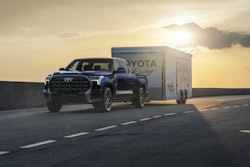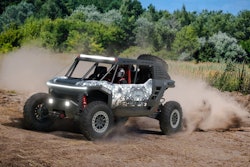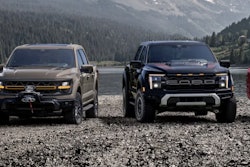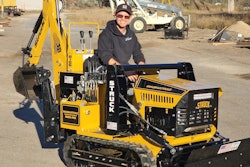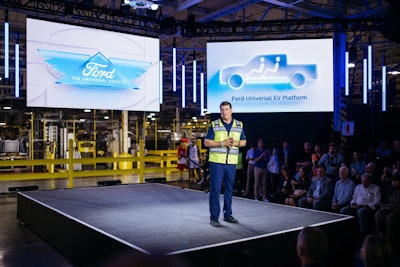
Following news Ford was delaying updates to its electric Ford F-150 Lightning until 2028, the company revealed it will produce a new, smaller electric pickup for 2027 – a midsize model with a starting price of about $30,000.
To produce the new four-door pickup, powered by lighter, lower-cost lithium iron phosphate prismatic batteries, Ford will spend $5 billion combined to expand its Louisville Assembly Plant in Kentucky and on its BlueOval Battery Park Michigan complex. The company says the investments will require 4,000 employees, a mix of new and current.
To achieve the lower truck price, Ford will deploy a new Universal EV Platform and Universal EV Production System. President and CEO Jim Farley likened it to a modern-day version of Ford’s historic assembly line invention for the Model T developed 120 years ago to make cars affordable. The company notes that the $30,000 price tag is equivalent to the price of a newly produced Model T in the early 1900s, when adjusted for inflation.
“We tore up the moving assembly line concept and designed a better one,” Farley says. “And we found a path to be the first automaker to make prismatic LFP batteries in the U.S.”
About the Truck
The new midsize pickup EV will be assembled in Louisville, with a targeted customer delivery of 2027 and a starting price of around $30,000, Ford says. (The starting MSRP for a 2025 Ford Lightning Pro is $54,780. Ford has delayed updates to the best-selling electric pickup in the U.S. and its E-Transit commercial van until 2028.)
The new pickup will be produced on a Universal EV Platform that reduces parts by 20%. The platform requires 25% fewer fasteners and a 40% reduction in workstations. It should speed up assembly by 15%. Ford claims the truck will have a lower cost of ownership over five years than a three-year-old used Tesla Model Y.
The midsize pickup will be the first vehicle produced under the new platform, with Ford saying more vehicles will follow. The new platform “enables a family of affordable vehicles to be produced at scale for customers – electric, fun to drive and digitally advanced with over-the-air updates that will keep improving the vehicle.”
By using its own lithium iron phosphate batteries, Ford will be able to increase space for storage and passengers and reduce the pickup’s weight at a lower cost. The LFP battery packs are cobalt- and nickel-free and will serve as the vehicle floor’s substructure. “This low center of gravity improves handling, creates a quiet cabin and provides a surprising amount of interior space,” the company says.
The result will be a truck with more passenger room than Toyota’s RAV4, with a bed and front trunk, or “frunk,” according to Ford.
The truck will also get the same performance benefits as other EVs, with instant torque and speed. Ford says it is shooting for the same 0-60 mph speed as its Mustang EcoBoost, which is about 4.5 seconds.
Further details, including battery range and charge time, will be revealed later, according to Ford.
About the New “Assembly Tree”
Ford says it is dropping the traditional assembly line concept for what it calls an “assembly tree.”
“Instead of one long conveyor, three sub-assemblies run down their own lines simultaneously and then join together,” the company says. “Large single-piece aluminum unicastings replace dozens of smaller parts, enabling the front and rear of the vehicle to be assembled separately.”
As the front and rear are being assembled, the battery system is also being assembled separately, along with the seats, consoles and carpeting.
All the components then come to the Louisville plant as a kit that includes the fasteners, scanners and power tools laid out in order of assembly.
Ford says this Universal EV Production System will increase assembly speed by 40% at the Louisville plant. “Some of that time will be reinvested into insourcing and automation to improve quality and cost, ultimately netting a 15% speed improvement,” according to Ford.
Of the $5 billion investment announced, $2 billion will go to the Louisville plant where 2,200 hourly employees will work, the company says. However, that’s a drop from the current 2,800 employed at the plant, according to courier-journal.com. The company told the newspaper there will be no layoffs, that employees will be offered buyouts or allowed to transfer to other plants. The Kentucky Economic Development Finance Authority provided $120 million in tax incentives for the plant’s 52,000-square-foot expansion, according to courier-journal.com.
For battery production, the remaining $3 billion will go to the BlueOval Battery Park Michigan. The plant will start building the prismatic LFP batteries next year, according to Ford.




